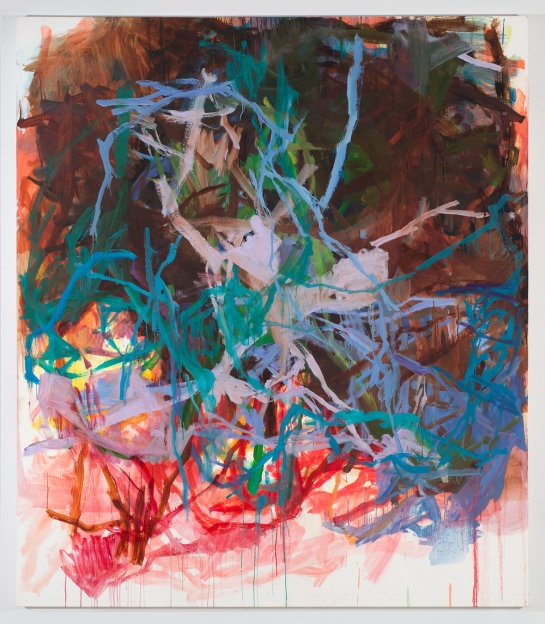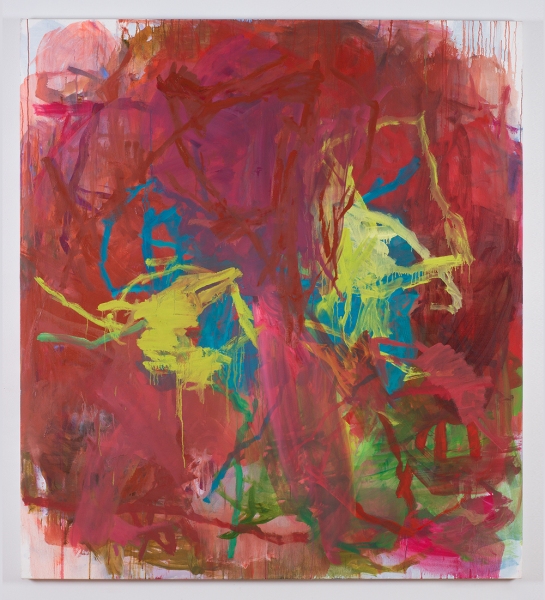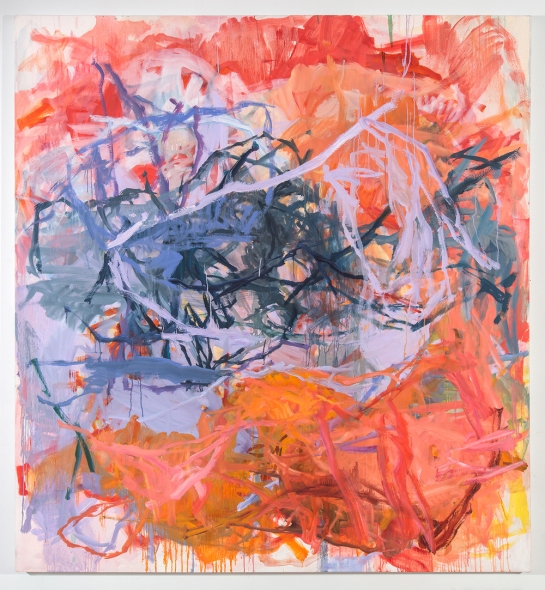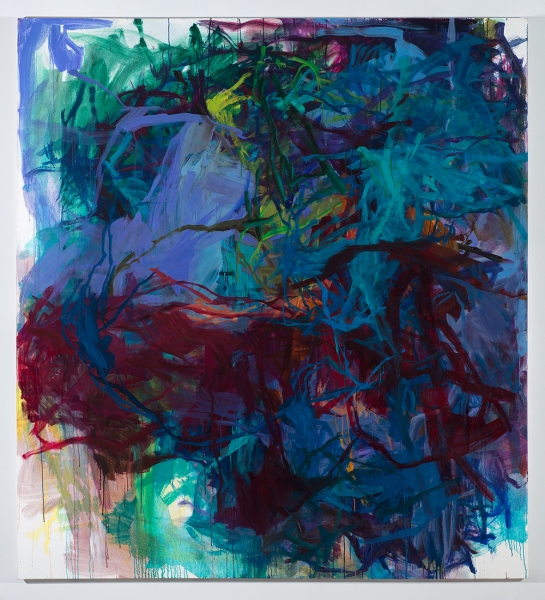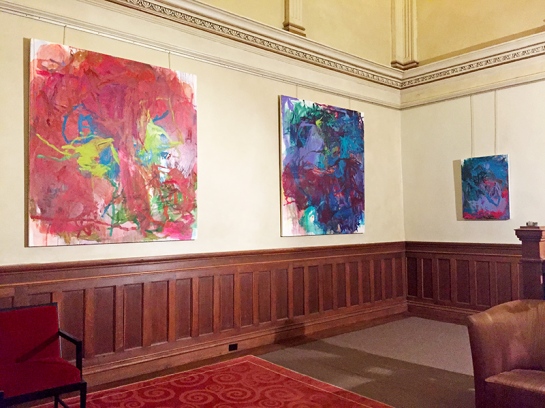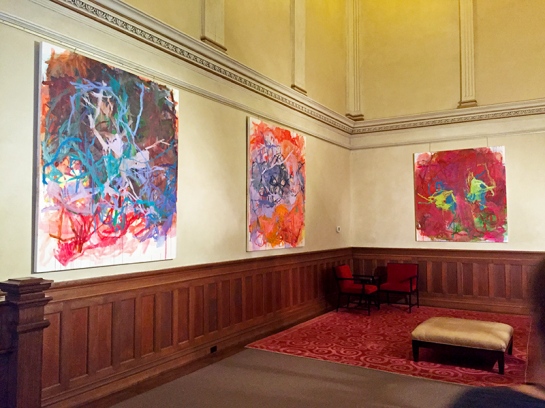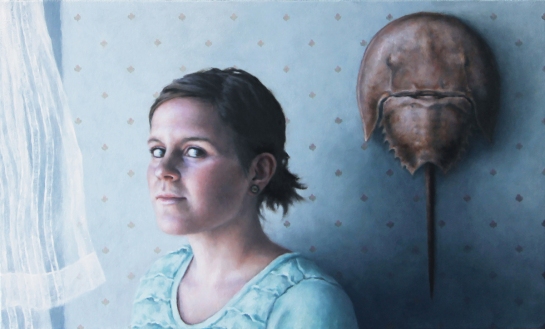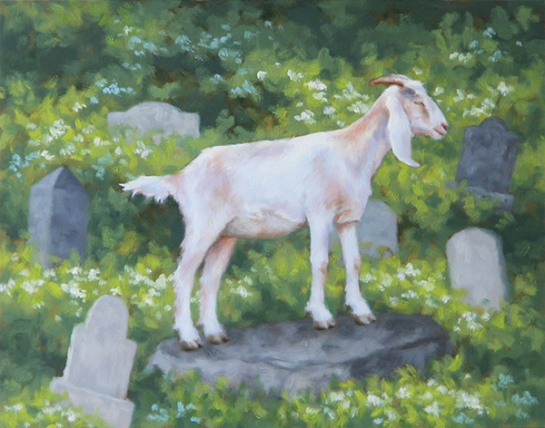SILVERMAN AND MAJESTIC THEATRE CONDOMINIUM ASSOCIATION present
Elizabeth Gilfilen: Nightcrawler
Opening Reception: March 4, 2016, 7–9 p.m.
The Majestic Theatre Condominiums
222 Montgomery Street
Jersey City, NJ 07302
201.435.8000
Exhibition on view in the lobby from March 4, 2016 — June 30, 2016
Curated by Brendan Carroll, brendanscottcarroll.com
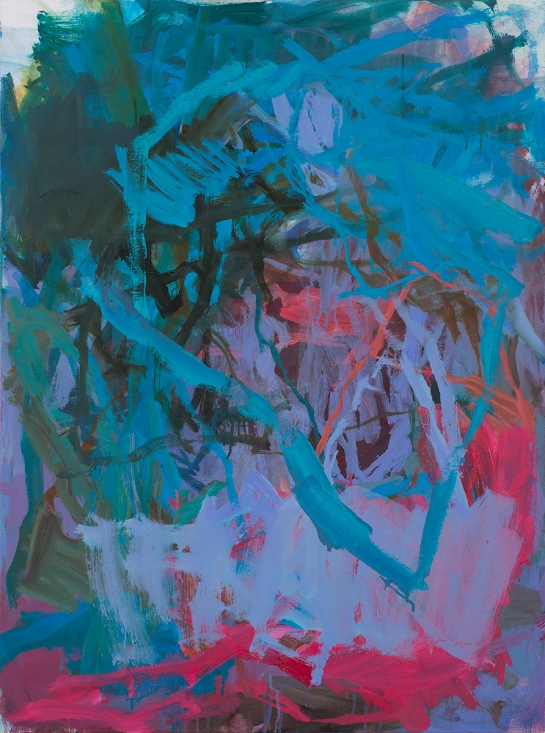
Nightcrawler, 2015, oil on canvas, 34 x 25 inches. Photo credit: Bill Orcutt. Courtesy of artist.
SILVERMAN AND MAJESTIC THEATRE CONDOMINIUM ASSOCIATION presents “Beth Gilfilen: Nightcrawler,” curated by Brendan Carroll. This exhibition features a selection of 10 abstract paintings completed in late 2015 and early 2106. Each painting is oil on stretched canvas or linen. Gilfilen’s paintings are built through layers and layers of dynamic brushwork, the wiping away of paint, antagonistic color play, and spatial complexity. Intuition, spontaneity, and improvisation inform her work as much as formal considerations. The results invigorate.
Gilfilen’s dynamic compositions with no fixed viewpoint are animated. The paint roils and seethes across the surface in seemingly perpetual motion. Within the picture plane, intersecting lines and conflicting colors create an undeniable energy. These paintings appear as a conflagration, a dustup, and an apparition. The eye rarely has a place to rest. Within the melee, a form may emerge: an insect, bones, or a tree.
Gilfilen does not approach a blank canvas with a preconceived notion. She has an open mind and lets the painting tell her what it needs next. “I don’t really have any strategy,” she says. ‘[Painting] is very intuitive and changes the moment I begin. I don’t like formulas, and I want the painting to take whatever route it needs to take.” The subject and object of her work is the search to discover elusive forms in the act of painting. Resolution is not a forgone conclusion. Form is not always discovered. The journey, not the destination, is the key.
Although her paintings give the impression they were created during an uninterrupted burst of activity, they more often than not develop in time, in deliberate increments. Her paintings begin with drawing. Accumulated marks grow and deviate. Sometimes when she sees a recognizable form emerge, she negates it. Part of Gilfilen’s process is to sit with her paintings in order to identify what the marks and the forms might be trying to tell her. She works on several canvases at a time, each one influencing the next, in constant call and response. “I enjoy this complicated relationship to the painting that develops over time and across a body of work,” notes Gilfilen.
Line, the individual brushstroke, forms the backbone of her work. Gilfilen’s calligraphic approach leads the eye around the canvas and form the essence of her paintings. Whether thick or thin, straight, diagonal, or curved, lines have a depth, weight, character, and descriptive power.
“I love line and think it captures everything: a record of time, a description of edges, rhythm, emotion, authorship,” she notes. “I want the paintings to come out of that.”
What is thrilling about her paintings is how they straddle the line between frantic scrawl and idiosyncratic calligraphy. Is the viewer looking at childlike scrawl or purposeful arabesques, which pirouette around the picture plane in the hope of finding an elusive image or form?
Gilfilen’s gestured-based work shares stylistic affinities with the New York School, but she is her own artist with her own set of priorities. Unlike her predecessors, she is more interested in illusion and the conjuring of hidden forms from the act of painting. “I want to make those actions into things,” Gilfilen remarks. When asked what separates her work from Abstract Expressionists, she says “We are all just pulling out the threads of the fabric of what we have seen, or the paintings we identify with, and reweaving them. It is like the folk songs that are passed down and rewritten with a slightly different rhythm in the next generation.”
One of the joys experienced when looking at Gilfilen’s paintings is wrestling between two forces: On the one hand, viewers may try to identify a recognizable shape; on the other hand, they may find themselves just taking in the painting itself, surrendering to the spectacle. Gilfilen is aware of the seemingly contradictory forces in her work, and how they may undo or undermine each other. She states:
“For me, there is a huge tension between the basic immersion in making the painting and what that can come to suggest. The work grows as I work, and I have to suspend my expectations of what I think it will be. To be right at the edge of recognizing form is very invigorating, and it surprises me, but only feels true when I have been completely present with the elements of painting. When this happens, I feel I can grasp something made-up, invented, but also sort of “real” or concrete. I love the chase between what slips right into the visual consciousness as I am making the painting and [what] slips away. Every slight move or shift of the line changes the outcome, so yes, I am continuously undoing the painting in my quest to find it!”
The hidden forms in her thickets of lines reside on the tip of the tongue. Part of the fun at looking at her work is trying to match the association to its word.
Elizabeth Gilfilen is an artist based in Brooklyn, New York. She received a BFA from the University of Cincinnati and an MFA from Virginia Commonwealth University. Awards include Yaddo, The Marie Walsh Sharpe Foundation Space Program, Gallery Aferro Studio Residency, Alijra Emerge Fellowship, and The Bronx Museum’s AIM Program. She was invited to make prints at Oehme Graphics in Colorado and was a Studio Immersion Project Fellow at the Robert Blackburn Printmaking Workshop in New York .
Recent group exhibitions include Morgan Lehman Gallery, the Blackburn 20/20 Space, the Elizabeth Foundation for the Arts in New York, NY, and Reynolds Gallery in Richmond, VA. Other group exhibitions include the Aldrich Contemporary Art Museum, the Islip Art Museum, and Lehman College Gallery. Solo exhibitions include Fred Giampietro Gallery in New Haven, CT; the Hunterdon Art Museum, Clinton, NJ; Gallery Aferro, Newark, NJ; and John Davis Gallery, Hudson, NY. Her work has been published twice in New American Paintings; reviewed in Two Coats of Paint, The Boston Globe, The Newark Star-Ledger and The New York Times.
The exhibition will be on view at Majestic Theatre Condominium Association through June 30, 2016. For further information, please visit us at SILVERMAN or call number (201) 435-8000. Majestic Theatre is located at 222 Montgomery Street in Jersey City.
“Elizabeth Gilfilen: Nightcrawler” is the thirtieth exhibition that Brendan Carroll will organize for SILVERMAN. For additional information on the artist, go here: elizabethgilfilen.com.
SILVERMAN has presented the works of Robert Hendrickson, Sarah Becktle, Kati Vilim, Mark Dagley, Candy Le Sueur, Ed Fausty, Anna Mogilevsky, Ali Harrington, Sara Wolfe, Anne Percoco, Shauna Finn, Melanie Vote, Paul Lempa, Fanny Allié, Michael Meadors, John A. Patterson, Charlotte Becket, Roger Sayre, Karina Aguilera Skvirsky, Tom McGlynn, Margaret Murphy, Valeri Larko, Tenesh Webber, Glenn Garver, Jennifer Krause Chapeau, Michelle Doll, Tim Heins, Megan Maloy, Laurie Riccadonna, Thomas John Carlson, Tim Daly, Ann Flaherty, Scott Taylor, Jason Seder, Sara Wolfe, Beth Gilfilen, Andrzej Lech, Hiroshi Kumagai, Victoria Calabro, Asha Ganpat, Darren Jones, Ryan Roa,Laura Napier, Risa Puno, Nyugen E. Smith, Amanda Thackray, and Kai Vierstra.
Transportation directions from Lower Manhattan to the Majestic Theatre in downtown Jersey City.
